Fitbit Versa vs. Apple Watch: Which Smartwatch Wins?
Fitbit takes aim at Apple with the Versa, a lower-priced smartwatch with an Apple Watch-like design. But cheaper doesn't necessarily mean better.
Fitbit's well-rounded and affordable new smartwatch, the $199 Fitbit Versa, is a direct challenge to the Apple Watch. The two devices share a similar aesthetic (though Apple was, obviously, first to market). Both are heavily focused on fitness and offer app stores that help the watch act independently from your smartphone.
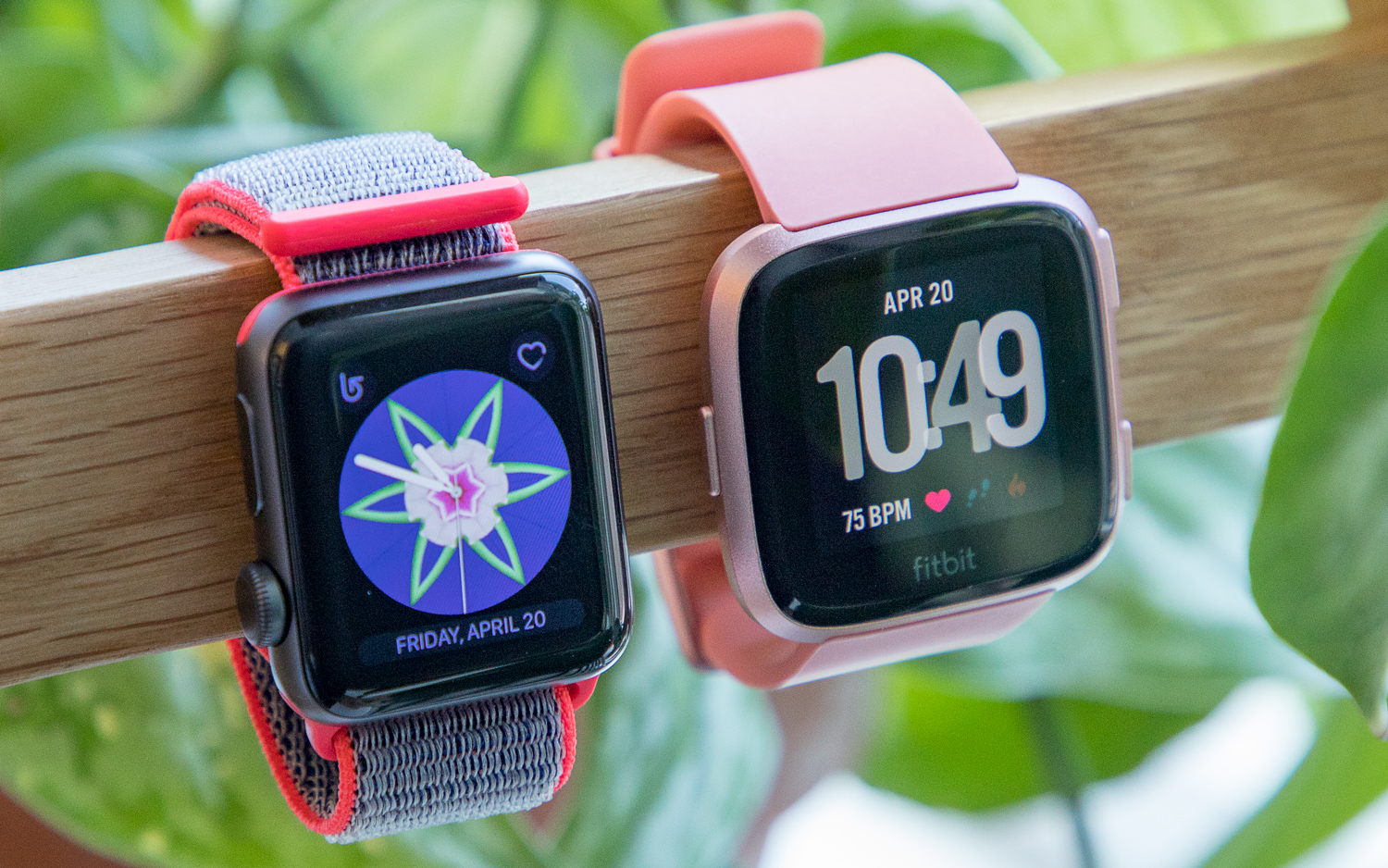
Fitbit undercuts its rival on price, but Apple has been in the smartwatch game for three years now, and the company is currently selling three versions of its popular Apple Watch with features that appeal to a variety of buyers at different prices.
Here's how the Fitbit Versa stacks up against the Apple Watch.
Price
The Fitbit Versa is $199, an obvious bid to be the Apple Watch's more affordable alternative. A special edition with NFC for mobile payments is $230.
Apple's entry-level Apple Watch, the Series 1, starts at $249. The Series 1 includes Apple Pay, Apple's own mobile-payment system.
The higher-priced Series 3 with GPS is $329, and the Series 3 with GPS and cellular connectivity starts at $399. (You can buy even higher-priced models, including a $799 option with a stainless-steel case and mesh band, and a $1,299 model with a ceramic case.)
The Versa is the most affordable option, so Fitbit wins on price.
Winner: Fitbit Versa
Design
Fitbit's first smartwatch, last year's Ionic, wasn't exactly fashion-forward. With Versa, Fitbit is taking a cue from Apple. The device is a slightly rounded square (or what Fitbit calls a "squircle"), which is more visually pleasing than the Ionic's bulky rectangular shape. The Versa is also thinner and lighter than the Apple Watch. The Series 1 is 0.88 ounces; the Versa is a more svelte 0.8 ounces. The Series 3 is the heaviest option, weighing in at a full ounce.
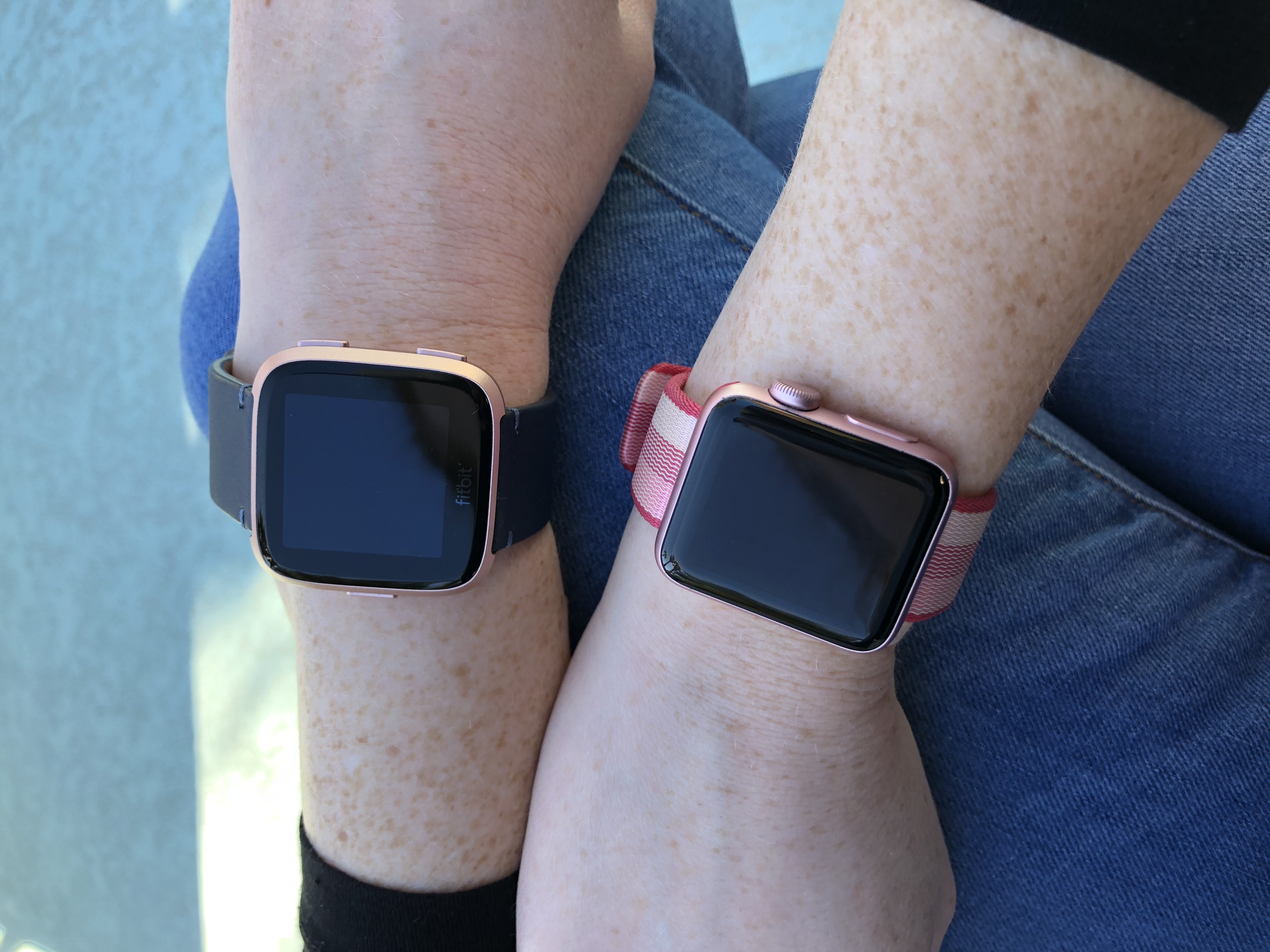
Although the Versa's display looks larger than the Apple Watch's when the screen is dark, the Versa's screen is actually surrounded by thick bezels that reduce the available real estate. You can see more information on the Apple Watch display than on the Versa.
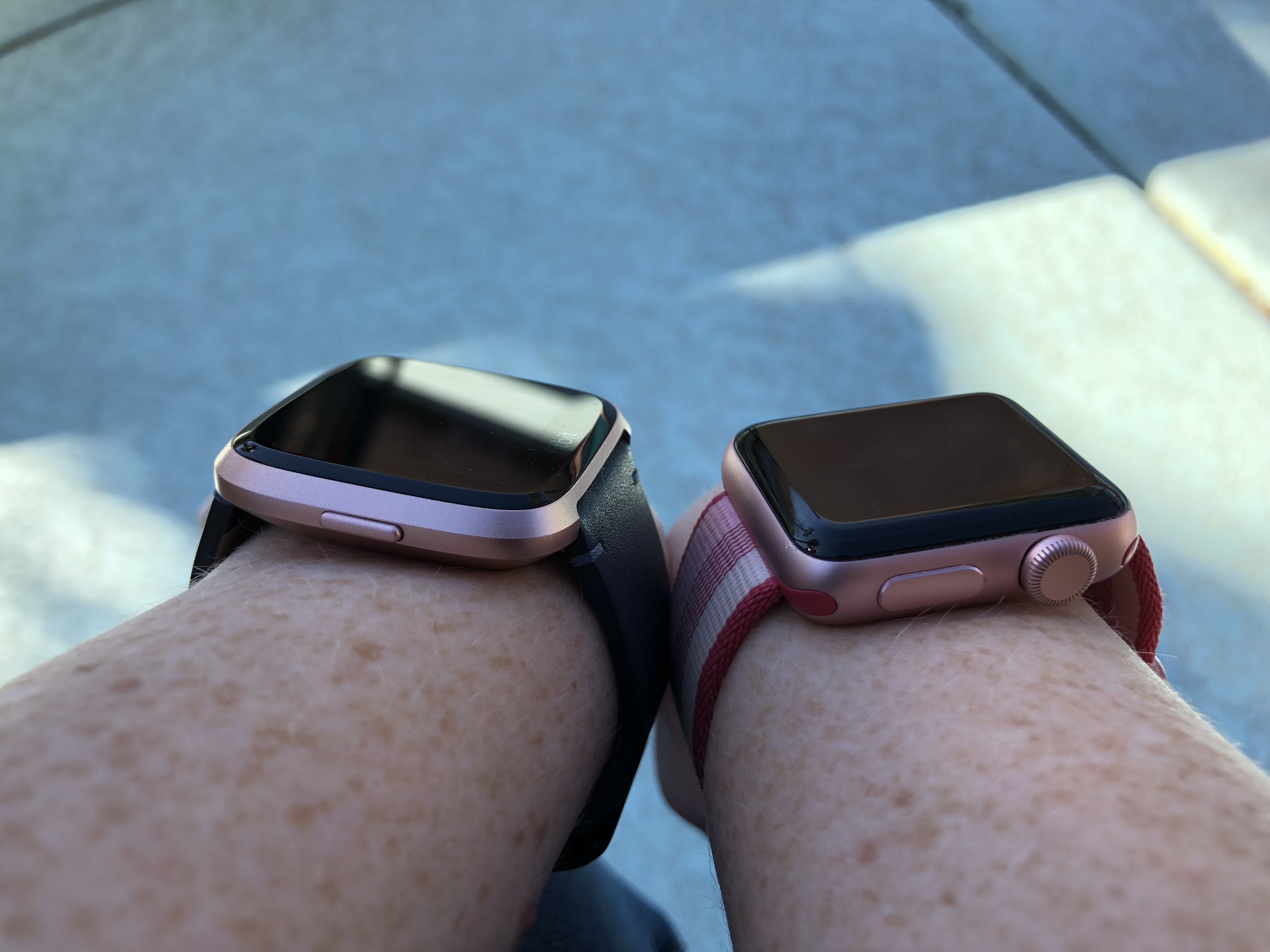
There are other, smaller design differences that set the Apple Watch apart. The device sports a Digital Crown, which makes it feel more like a watch and less like a phone on your wrist. The sport band also feels more luxe than the classic band that ships with the Versa. Both the Apple Watch and Fitbit Versa offer interchangeable bands, and you can buy additional straps online. But Apple offers more variety in material and color, plus designers such as Coach sell even more bands to choose from.
While the Versa and Apple Watch look similar, Apple takes the edge.
Winner: Apple Watch
Fitness
The Fitbit Versa's fitness features are most comparable to the Apple Watch Series 1. Series 3 ups the ante with GPS, which neither the Series 1 nor the Versa offer.
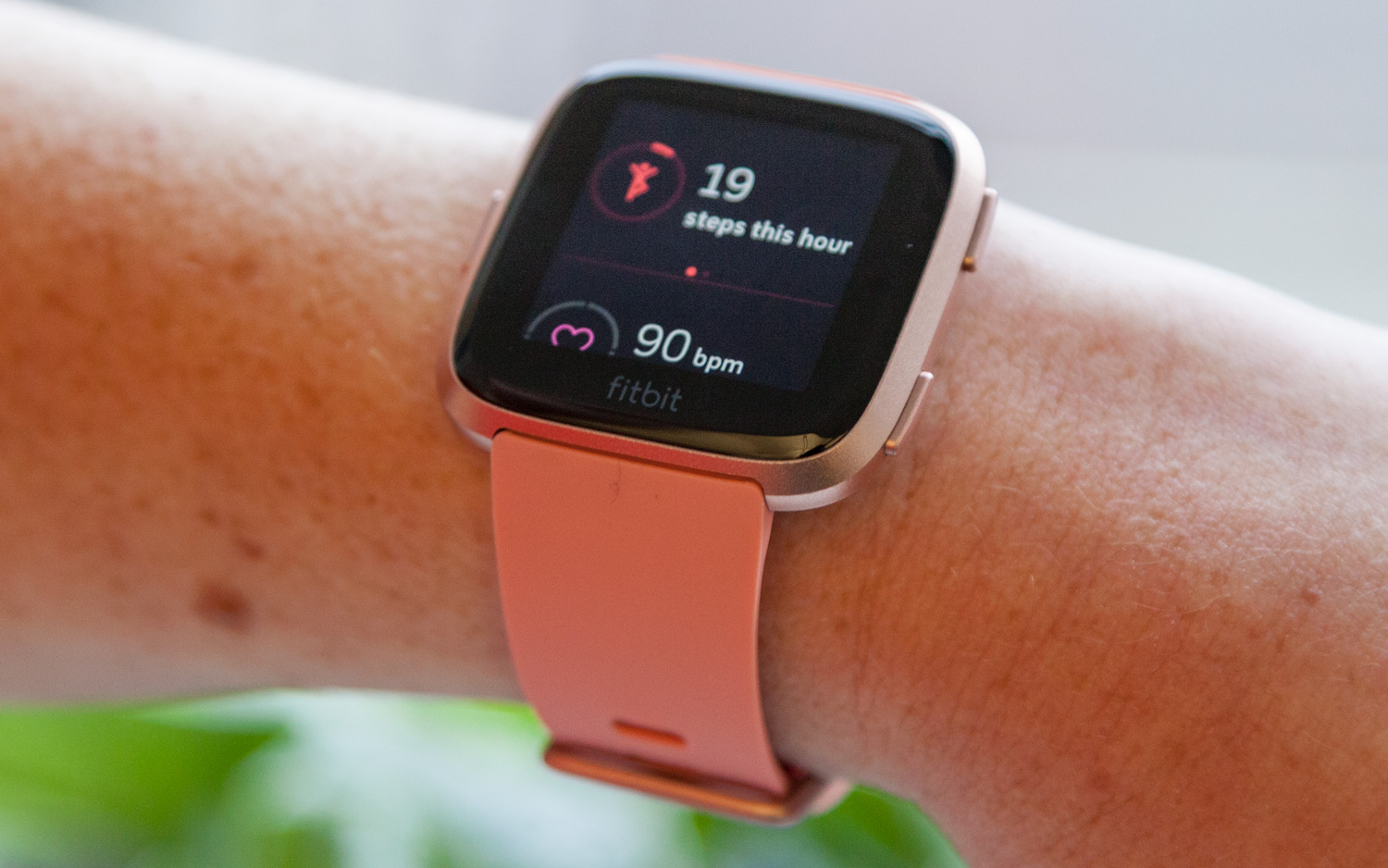
Each device offers its benefits and disadvantages when it comes to fitness. The Versa and Apple Watch are designed for a mainstream audience, and as such, you won't get some of the advanced metrics offered by devices such as Garmin's Forerunner or Fenix lineup. But both watches let you track walking, running, biking, elliptical workouts and more.
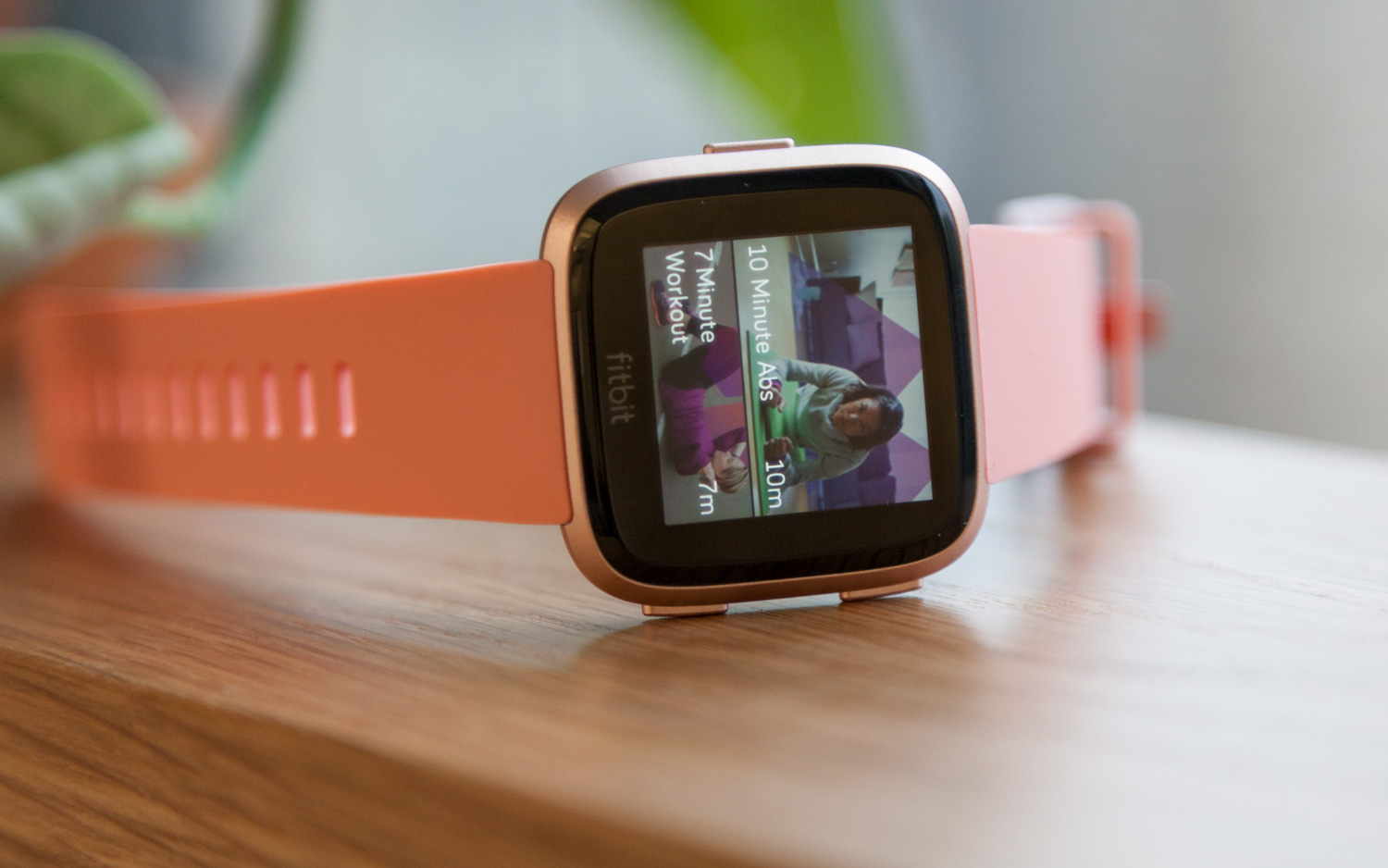
The Versa offers a setting for Pilates, while the Apple Watch can track high-intensity interval training. The Series 1 integrates with some popular gym equipment brands for more accurate indoor workout-tracking.
MORE: Our Favorite Smartwatches for iOS and Android
Swimmers will want a Versa or splurge on an Apple Watch Series 3, because the Series 1 isn't swim-proof. Fitbit's new smartwatch can handle pool workouts.

When it comes to working out, motivation is key. Fitbit offers a built-in community with social features so you can compete against friends and family who also work out with Fitbit devices. Apple's social features are limited, though you can share activity with friends and send each other encouraging (or trash-talking) post-exercise messages on the watch. But the Apple Watch encourages you to move, exercise and stand using rings that you have to close each day, then awards badges when you continue reaching those goals. Fitbit also lets you set goals, but they're not quite as effective as the rings.
Winner: Draw
Battery Life
When it comes to battery life, there's no competition. The Apple Watch lasts about 24 hours on a charge, or slightly longer if you don't use the device much throughout the day. You can squeeze a little more than four days out of the Versa, even with workout-tracking and listening to music on the device.
Winner: Fitbit Versa
Sleep Tracking
Fitbit's sleep tracking is the most accurate and insightful of any fitness tracker I've tested. You can take advantage of the sleep analysis using any Fitbit with an optical heart-rate sensor, but it's a rare find in a mainstream smartwatch to offer. The Versa accurately tracks when I fall asleep and when I wake during the night without me having to toggle on a sleep setting to start tracking. Fitbit's software analyzes your sleep quality, and can tell based on your heart rate and movement how much time you spend in light, deep and REM sleep.
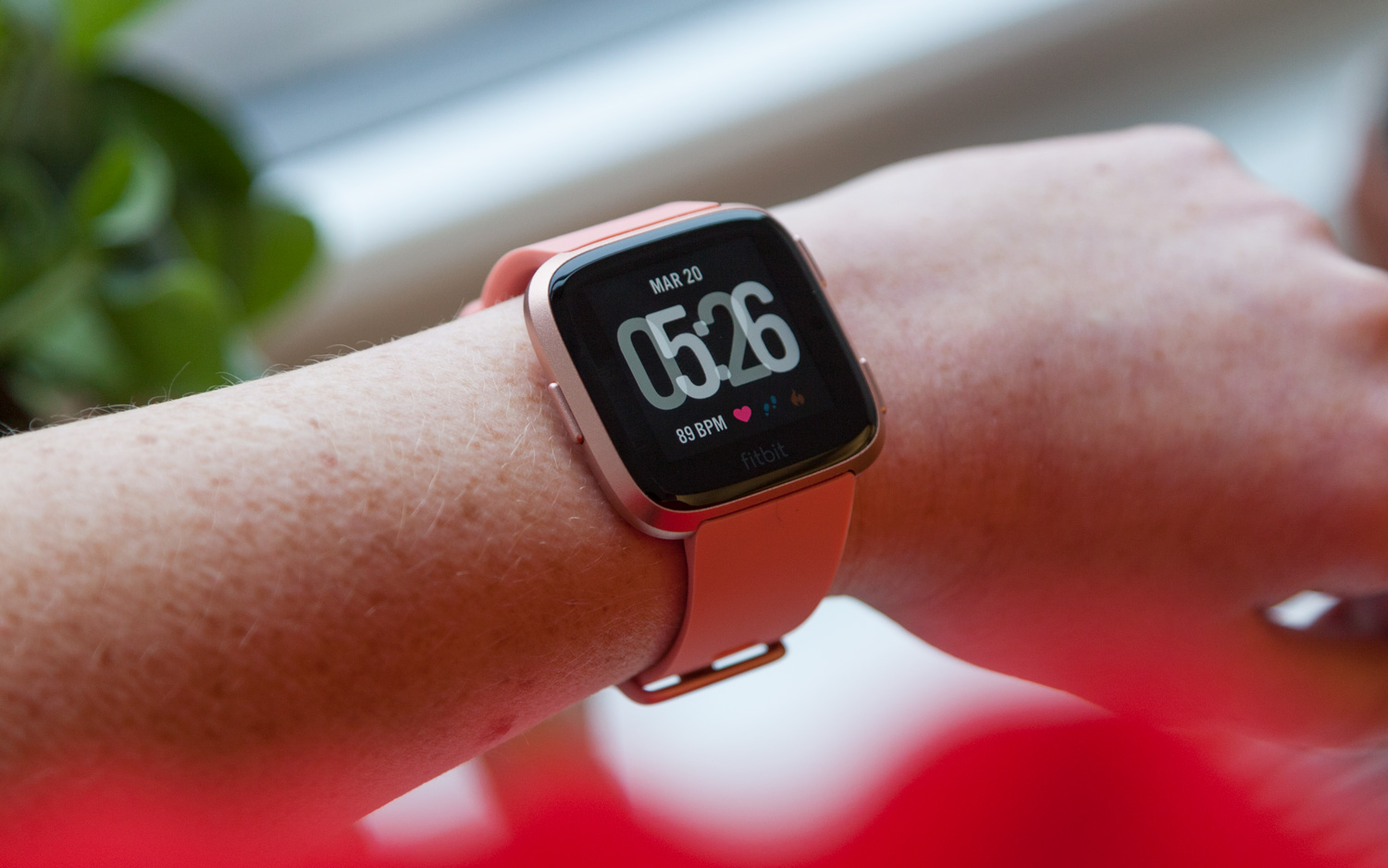
The Apple Watch app store offers sleep-tracking apps, but that's not quite as useful as wearing a device that automatically logs your sleep without having to lift a finger.
Winner: Fitbit Versa
Apps
Fitbit's software platform is less than a year old, but it already offers 550 apps and custom clock faces for users to download. Some of those apps are big names such as Starbucks and Strava — apps that are useful to have on a fitness-focused smartwatch.
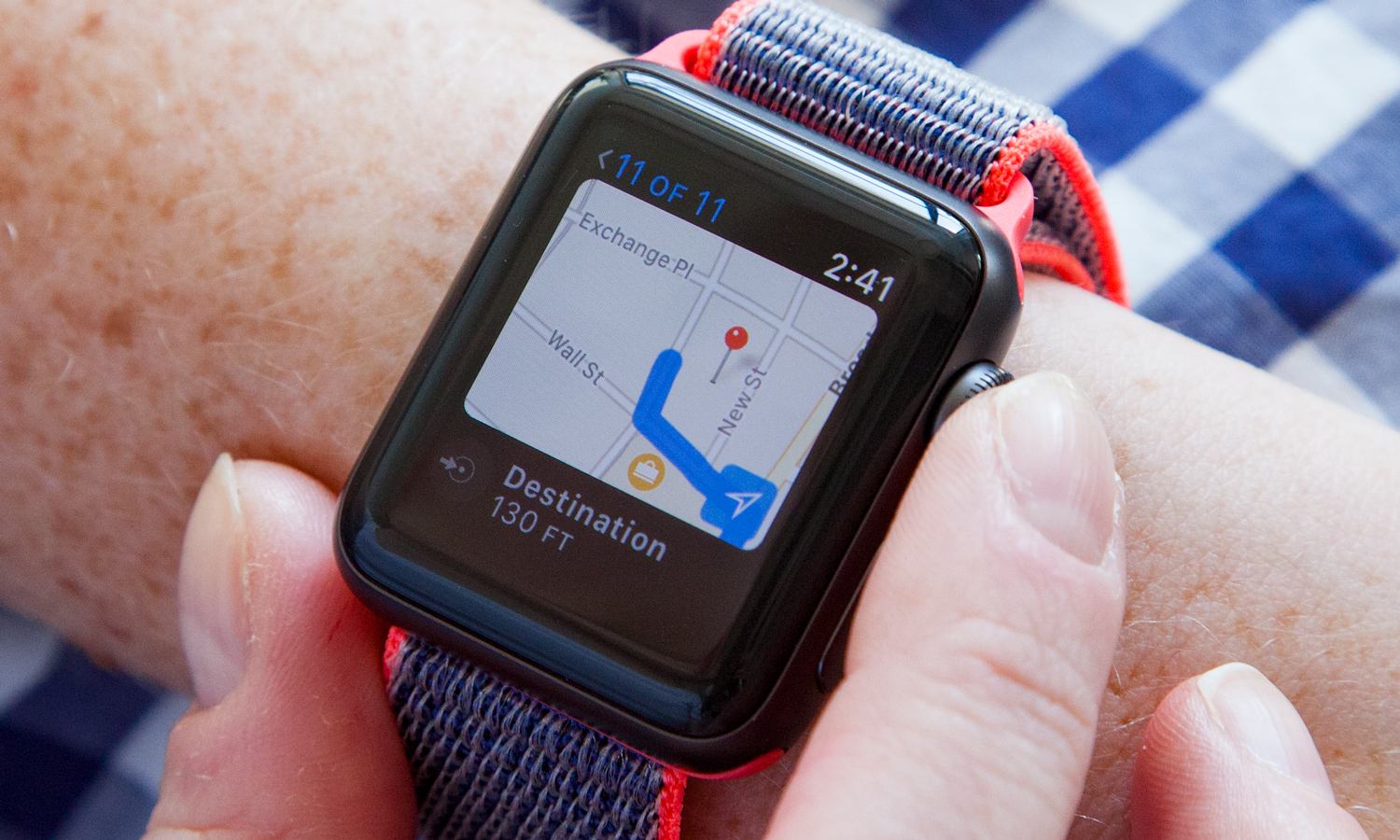
Apple offers a wider array of watch apps numbering in the thousands. But it’s not just about app quantity. The Apple Watch hardware and watchOS platform are also more capable than Fitbit's, so you can interact with apps in ways not possible on the Versa. For instance, you can record audio on the Apple Watch, translate words in other languages and map directions from your watch. You can't do that on the Versa.
Winner: Apple Watch
Smartphone Integration
Fitbit is working on making the Versa more useful with Android devices. You'll soon be able to send pre-written replies to text messages you receive on your Android phone directly from your wrist.
MORE: Smartwatch Buying Guide: Everything You Need to Know
But there's no beating Apple in this category. The watch and iPhone work seamlessly together. You can even use Apple's Handoff feature, commonly used to start a task on your phone and then pick it up on your Mac, to do the same from your Apple Watch to your iPhone. That's a convenience you can't find on the Versa. However, Android users are out of luck, as the Apple Watch works only with iPhones.
Winner: Apple Watch
Bottom Line
The Apple Watch is a better smartwatch than the Fitbit Versa. If you pay more for a Series 3 with cellular, you'll have a device than can operate independently from a phone (although in my experience, paying more for the LTE Apple Watch isn't worth it).
| Row 0 - Cell 0 | Apple Watch Series 1 | Fitbit Versa |
| Price (10) | 8 | 9 |
| Design (20) | 19 | 15 |
| Fitness (20) | 16 | 16 |
| Battery life (15) | 10 | 15 |
| Sleep-tracking (10) | 5 | 10 |
| Apps (15) | 14 | 10 |
| Smartphone integration (10) | 10 | 5 |
| Overall (100) | 82 | 80 |
But if you don't use an iPhone or have an iCloud account, the Apple Watch is useless. Android users will find the Fitbit Versa is better for tracking workouts and sleep than any wearOS device, and the addition of quick replies (coming soon in a Versa software update) will make Fitbit's smartwatch more useful for Android users.
For lengthy battery life and sleep analysis, Fitbit Versa is the best choice. If you're embedded in Apple’s ecosystem, the Apple Watch offers a better experience.
Credit: Shaun Lucas/Tom's Guide
Sign up to get the BEST of Tom's Guide direct to your inbox.
Get instant access to breaking news, the hottest reviews, great deals and helpful tips.
Caitlin is a Senior editor for Gizmodo. She has also worked on Tom's Guide, Macworld, PCWorld and the Las Vegas Review-Journal. When she's not testing out the latest devices, you can find her running around the streets of Los Angeles, putting in morning miles or searching for the best tacos.
-
rugora I haven't tried it yet, but I'm a Fitbit fan, so I would, naturally, choose Fitbit Versa over Apple Watch. :) I also like the Versa's design more.Reply -
sonali456 Apple Activity and Workout apps look glorious, but Fitbit’s appealing multi-phone app features and data graphics. Fitbit also wins by having a rich desktop dashboard . But i always like apple watch.Reply
